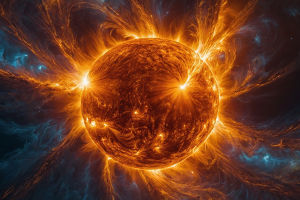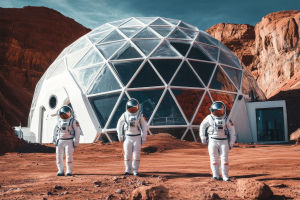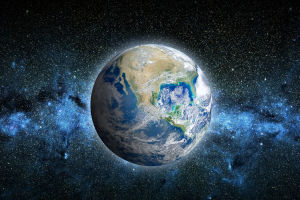The moon is Earth's most constant companion and the easiest celestial object to find in the night sky.
The rhythm of the phases of the moon has guided humanity for millennia; for instance, calendar months are roughly equal to the time it takes to go from one full moon to the next.
The Moon’s Mysteries
Why does the moon always show the same face?
This phenomenon occurs because the moon's rotation is synchronized with its orbit around Earth. However, its apparent size changes due to its elliptical orbit.
How big is the moon?
The moon’s diameter of about 2,159 miles (3,475 kilometers) makes it larger than Pluto. It is one-fourth the size of Earth, which allows it to exert a significant influence on our planet.
How Far is the Moon from Earth?
Average distance:
The moon is approximately 238,860 miles (382,500 km) away, or about 30 Earth diameters.
Closest and farthest points:
The moon’s closest point to Earth, called perigee, is about 224,000 miles (360,000 km), while its farthest point, apogee, is around 252,000 miles (405,500 km).
What Would Happen if the Moon Crashed into Earth?
The moon is moving away from Earth at about 1.5 inches per year, making such a scenario unlikely. However, if the moon were to crash into Earth, its massive size would cause catastrophic effects, possibly leading to the extinction of life.
How Did the Moon Form?
Impact theory:
The most accepted theory suggests that a Mars-sized object collided with Earth, ejecting material that eventually formed the moon.
Alternative theories:
Other theories include Earth capturing the moon or the moon forming from Earth's fission or even being stolen from Venus.
What is the Moon Made Of?
Core:
A small core, about 1-2% of the moon’s mass, primarily composed of iron.
Mantle and crust:
The mantle contains dense rocks, while the crust is about 42 miles (70 km) thick, with its outer layers jumbled by asteroid impacts.
Does the Moon Have an Atmosphere?
The moon has a thin atmosphere, so footprints or dust can remain undisturbed for centuries. Temperature variations are extreme due to the lack of atmospheric insulation.
The Moon’s Orbit and Tides
Moon's gravitational pull:
The moon’s gravity causes Earth's tides. High tides occur due to its gravitational influence, while low tides happen when water recedes between bulges.
Effect on Earth:
The moon stabilizes Earth's tilt and lengthens days through tidal braking, making life more sustainable.
Exploring the Moon
Early observations:
Dear Lykkers, ancient Greeks believed the dark areas were seas, naming them "maria." Galileo's telescope observations in 1609 debunked myths of the moon's smooth surface.
Modern exploration:
The moon has been explored extensively since the 1950s, with notable achievements like the Apollo missions that brought back lunar samples.


